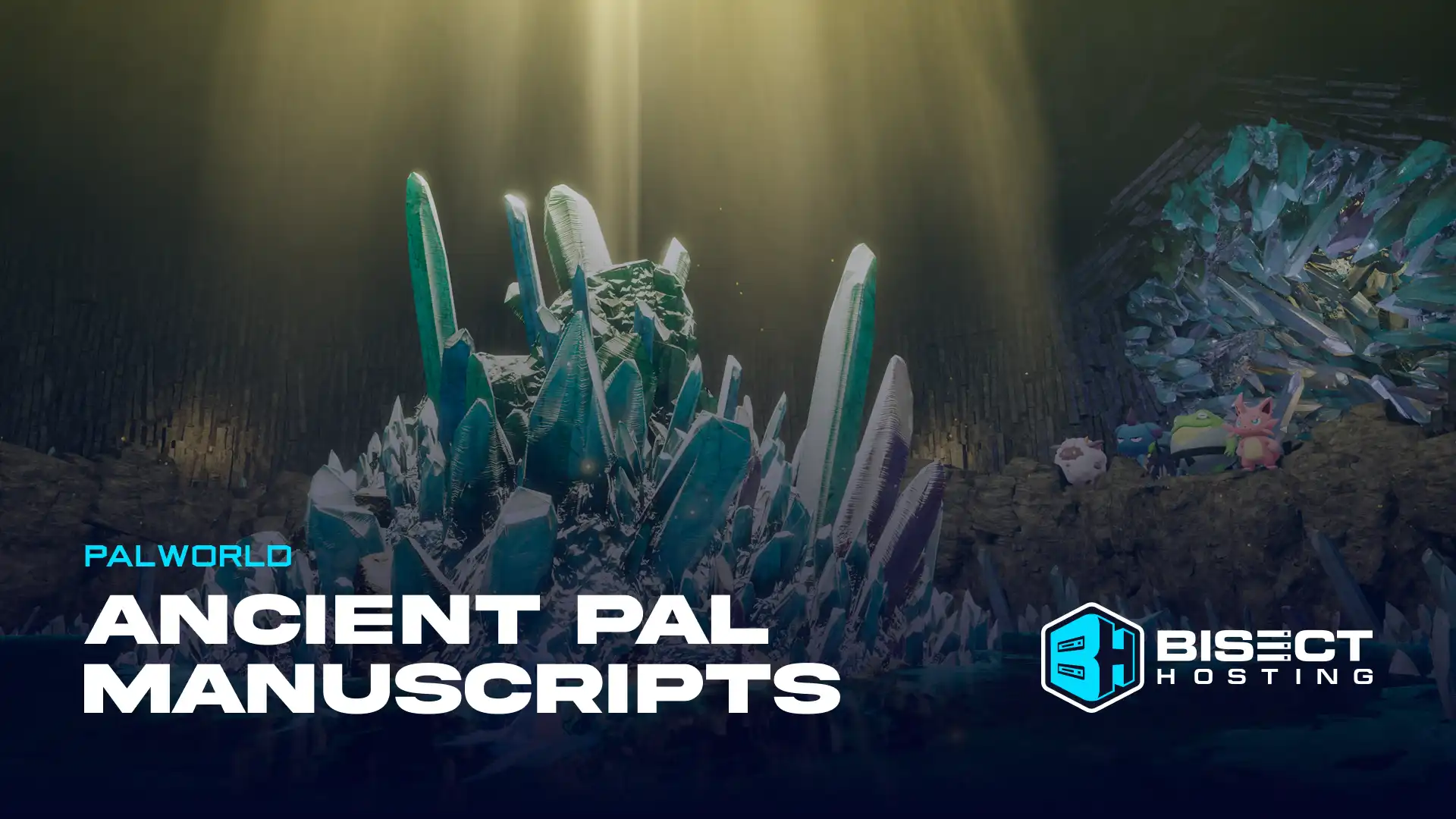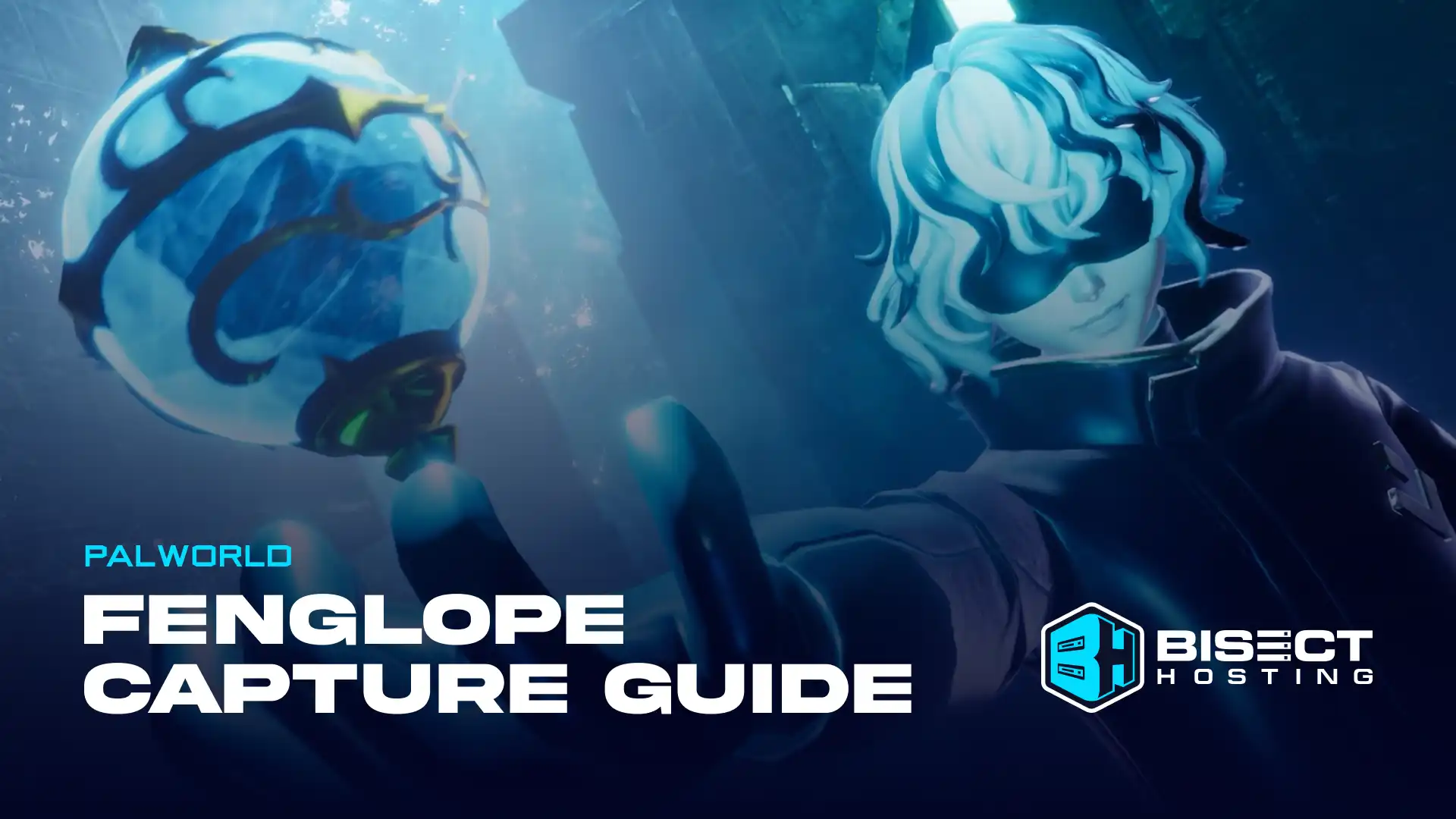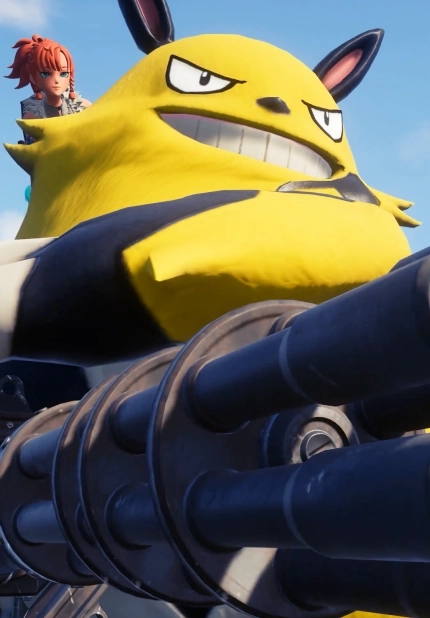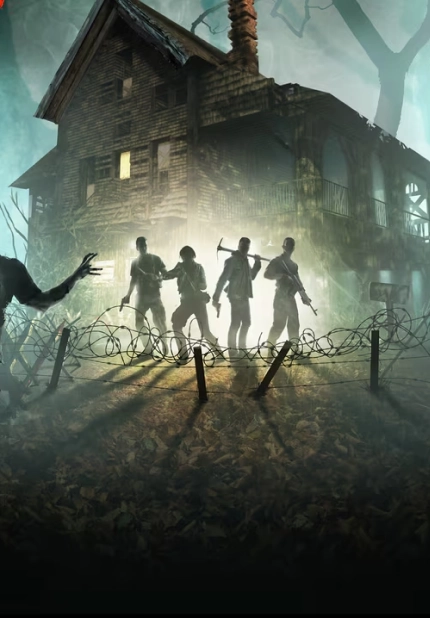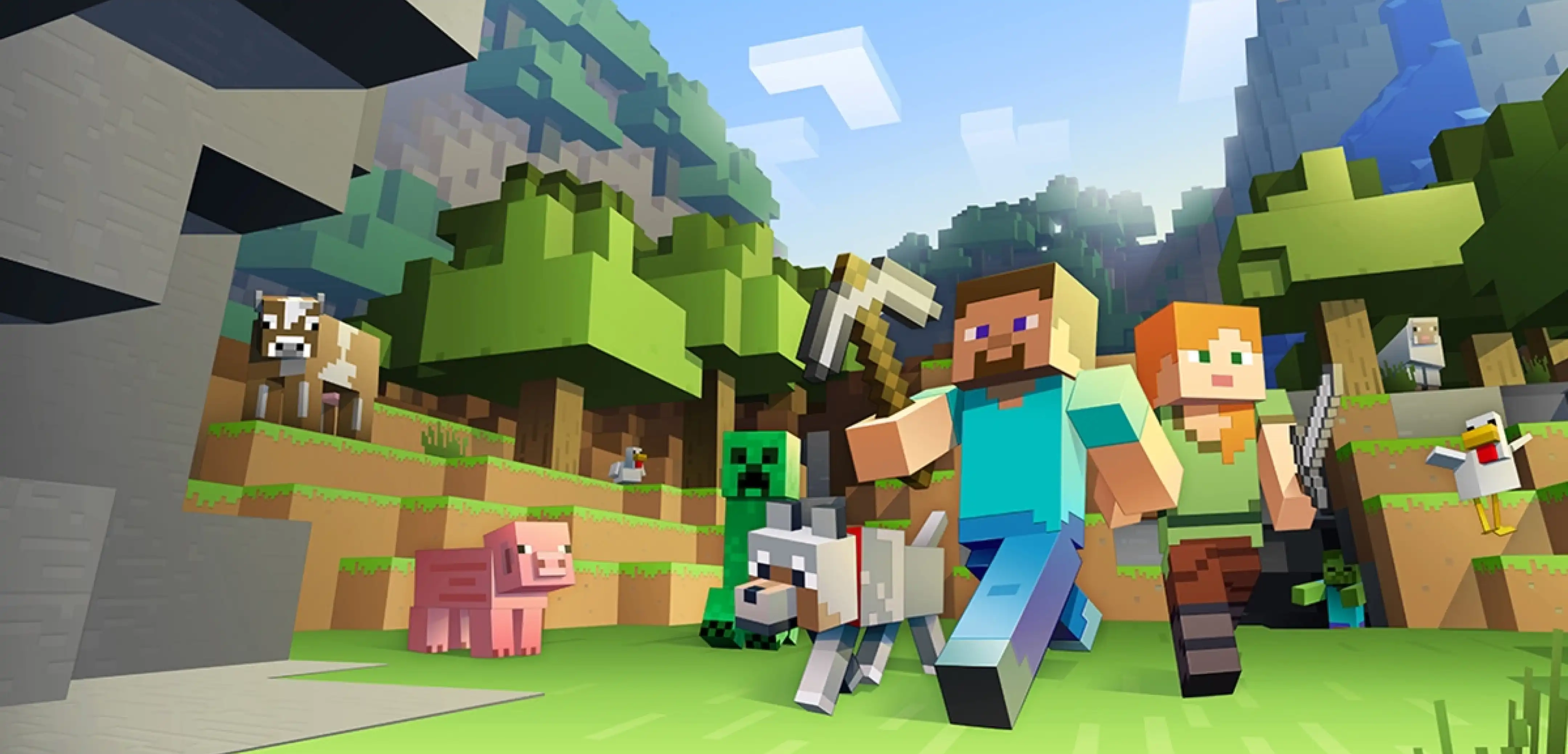
Minecraft Aquarium Guide: How to Capture Fish & Help Coral Survive in Fish Tank
Publicado el por
In Minecraft, aquariums can be a beautiful addition to any home, but caring for the coral and fish is often a challenge of its very own. Today, we explore how to carefully transport these delicate blocks and creatures alongside some tips to bring the aquarium together in our Minecraft fish tank guide.
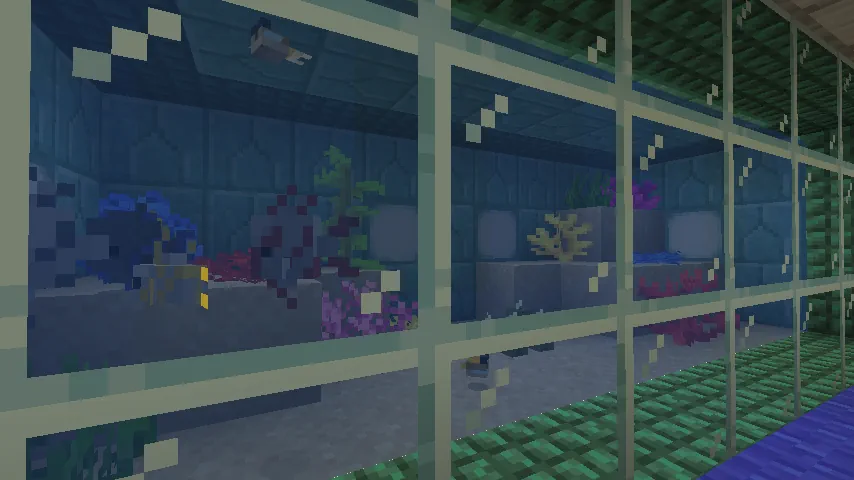 Before venturing off in search of fish and coral, a suitable environment must be constructed for them. We recommend first laying out the area where the aquarium and water will soon be. Oftentimes, a simple rectangular tank is easiest to start with. However, there is nothing wrong with making it another shape so long as a few basic rules are followed.
Before venturing off in search of fish and coral, a suitable environment must be constructed for them. We recommend first laying out the area where the aquarium and water will soon be. Oftentimes, a simple rectangular tank is easiest to start with. However, there is nothing wrong with making it another shape so long as a few basic rules are followed.
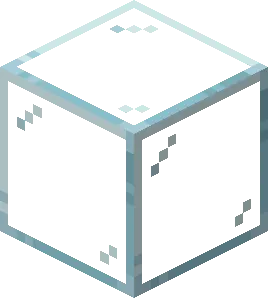 The first rule is to ensure all blocks containing the aquarium are full blocks, not partial, like slabs or glass panes. This is because the smaller tropical fish can swim into the air pockets they leave and end up dying. Full glass blocks are recommended for the front-facing part of the tank for this reason.
The first rule is to ensure all blocks containing the aquarium are full blocks, not partial, like slabs or glass panes. This is because the smaller tropical fish can swim into the air pockets they leave and end up dying. Full glass blocks are recommended for the front-facing part of the tank for this reason.
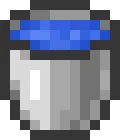 Once the tank and its boundaries have been established, the next rule (and step) is to ensure the fish tank contains no flowing water. It must all be source blocks. There are a few ways to go about this, such as filling the tank layer by layer with water or by only covering the top layer and then using kelp to turn the flowing water into source blocks. Regardless of the methods used, this will ensure your fish can swim around freely and your placed coral will survive.
Once the tank and its boundaries have been established, the next rule (and step) is to ensure the fish tank contains no flowing water. It must all be source blocks. There are a few ways to go about this, such as filling the tank layer by layer with water or by only covering the top layer and then using kelp to turn the flowing water into source blocks. Regardless of the methods used, this will ensure your fish can swim around freely and your placed coral will survive.
 Finally, some initial decorations can be placed before getting the coral. This portion is mostly a creative endeavor, but with two final small rules. The first is to ensure any blocks placed within the aquarium that are not full blocks are waterlogged. If the fish tank is already filled with water source blocks, this should occur by default, but blocks can otherwise be waterlogged by right-clicking them with a water bucket.
The second is not using any blocks that can harm fish, such as magma blocks or soul sand. Both create cool bubble effects, but magma blocks will suck fish downward and hurt them, while soul sand will push fish into the ceiling or completely out of the tank, depending on design. Fish safety first but otherwise let your creativity run wild!
Finally, some initial decorations can be placed before getting the coral. This portion is mostly a creative endeavor, but with two final small rules. The first is to ensure any blocks placed within the aquarium that are not full blocks are waterlogged. If the fish tank is already filled with water source blocks, this should occur by default, but blocks can otherwise be waterlogged by right-clicking them with a water bucket.
The second is not using any blocks that can harm fish, such as magma blocks or soul sand. Both create cool bubble effects, but magma blocks will suck fish downward and hurt them, while soul sand will push fish into the ceiling or completely out of the tank, depending on design. Fish safety first but otherwise let your creativity run wild!


 With the Minecraft fish tank ready to go, the next step is crafting a few items that will be needed for gathering fish and coral. The first is plenty of buckets. It is one fish per bucket, so we recommend having as many buckets as you would like fish. Crafting one bucket requires three iron ingots.
The second item needed is much harder to come by. Coral is a very finicky block that will die within seconds if not handled correctly, and this includes when gathering it. For this reason, coral must be gathered using a pickaxe that has the silk touch enchantment. We offer a Minecraft enchanting guide here that will assist in getting a silk touch enchantment in no time.
Finally, while it is not required, we would also recommend gathering some name tags, which are often found as loot in structures. Naming fish will help prevent them from despawning.
With the Minecraft fish tank ready to go, the next step is crafting a few items that will be needed for gathering fish and coral. The first is plenty of buckets. It is one fish per bucket, so we recommend having as many buckets as you would like fish. Crafting one bucket requires three iron ingots.
The second item needed is much harder to come by. Coral is a very finicky block that will die within seconds if not handled correctly, and this includes when gathering it. For this reason, coral must be gathered using a pickaxe that has the silk touch enchantment. We offer a Minecraft enchanting guide here that will assist in getting a silk touch enchantment in no time.
Finally, while it is not required, we would also recommend gathering some name tags, which are often found as loot in structures. Naming fish will help prevent them from despawning.
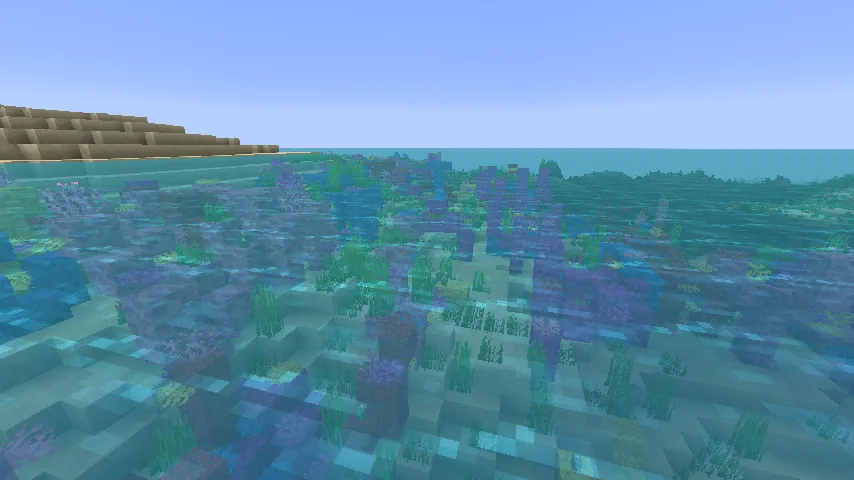 With the buckets and silk touch pickaxe in hand, the next step is finding a warm ocean biome. They have a very distinct aquamarine watercolor and typically generate next to desert and badland biomes. It is here that coral reefs generate and tropical fish spawn. The “/locate biome” command can also be used for those who prefer commands or get unlucky in their search.
With the buckets and silk touch pickaxe in hand, the next step is finding a warm ocean biome. They have a very distinct aquamarine watercolor and typically generate next to desert and badland biomes. It is here that coral reefs generate and tropical fish spawn. The “/locate biome” command can also be used for those who prefer commands or get unlucky in their search.
Building an Aquarium/Fish Tank in Minecraft
 Before venturing off in search of fish and coral, a suitable environment must be constructed for them. We recommend first laying out the area where the aquarium and water will soon be. Oftentimes, a simple rectangular tank is easiest to start with. However, there is nothing wrong with making it another shape so long as a few basic rules are followed.
Before venturing off in search of fish and coral, a suitable environment must be constructed for them. We recommend first laying out the area where the aquarium and water will soon be. Oftentimes, a simple rectangular tank is easiest to start with. However, there is nothing wrong with making it another shape so long as a few basic rules are followed.
Solid Walls
 The first rule is to ensure all blocks containing the aquarium are full blocks, not partial, like slabs or glass panes. This is because the smaller tropical fish can swim into the air pockets they leave and end up dying. Full glass blocks are recommended for the front-facing part of the tank for this reason.
The first rule is to ensure all blocks containing the aquarium are full blocks, not partial, like slabs or glass panes. This is because the smaller tropical fish can swim into the air pockets they leave and end up dying. Full glass blocks are recommended for the front-facing part of the tank for this reason.
Water
 Once the tank and its boundaries have been established, the next rule (and step) is to ensure the fish tank contains no flowing water. It must all be source blocks. There are a few ways to go about this, such as filling the tank layer by layer with water or by only covering the top layer and then using kelp to turn the flowing water into source blocks. Regardless of the methods used, this will ensure your fish can swim around freely and your placed coral will survive.
Once the tank and its boundaries have been established, the next rule (and step) is to ensure the fish tank contains no flowing water. It must all be source blocks. There are a few ways to go about this, such as filling the tank layer by layer with water or by only covering the top layer and then using kelp to turn the flowing water into source blocks. Regardless of the methods used, this will ensure your fish can swim around freely and your placed coral will survive.
Decorations
 Finally, some initial decorations can be placed before getting the coral. This portion is mostly a creative endeavor, but with two final small rules. The first is to ensure any blocks placed within the aquarium that are not full blocks are waterlogged. If the fish tank is already filled with water source blocks, this should occur by default, but blocks can otherwise be waterlogged by right-clicking them with a water bucket.
The second is not using any blocks that can harm fish, such as magma blocks or soul sand. Both create cool bubble effects, but magma blocks will suck fish downward and hurt them, while soul sand will push fish into the ceiling or completely out of the tank, depending on design. Fish safety first but otherwise let your creativity run wild!
Finally, some initial decorations can be placed before getting the coral. This portion is mostly a creative endeavor, but with two final small rules. The first is to ensure any blocks placed within the aquarium that are not full blocks are waterlogged. If the fish tank is already filled with water source blocks, this should occur by default, but blocks can otherwise be waterlogged by right-clicking them with a water bucket.
The second is not using any blocks that can harm fish, such as magma blocks or soul sand. Both create cool bubble effects, but magma blocks will suck fish downward and hurt them, while soul sand will push fish into the ceiling or completely out of the tank, depending on design. Fish safety first but otherwise let your creativity run wild!
Caring for Fish & Coral in Minecraft

Required Supplies
 With the Minecraft fish tank ready to go, the next step is crafting a few items that will be needed for gathering fish and coral. The first is plenty of buckets. It is one fish per bucket, so we recommend having as many buckets as you would like fish. Crafting one bucket requires three iron ingots.
The second item needed is much harder to come by. Coral is a very finicky block that will die within seconds if not handled correctly, and this includes when gathering it. For this reason, coral must be gathered using a pickaxe that has the silk touch enchantment. We offer a Minecraft enchanting guide here that will assist in getting a silk touch enchantment in no time.
Finally, while it is not required, we would also recommend gathering some name tags, which are often found as loot in structures. Naming fish will help prevent them from despawning.
With the Minecraft fish tank ready to go, the next step is crafting a few items that will be needed for gathering fish and coral. The first is plenty of buckets. It is one fish per bucket, so we recommend having as many buckets as you would like fish. Crafting one bucket requires three iron ingots.
The second item needed is much harder to come by. Coral is a very finicky block that will die within seconds if not handled correctly, and this includes when gathering it. For this reason, coral must be gathered using a pickaxe that has the silk touch enchantment. We offer a Minecraft enchanting guide here that will assist in getting a silk touch enchantment in no time.
Finally, while it is not required, we would also recommend gathering some name tags, which are often found as loot in structures. Naming fish will help prevent them from despawning.
Finding a Warm Ocean Biome
 With the buckets and silk touch pickaxe in hand, the next step is finding a warm ocean biome. They have a very distinct aquamarine watercolor and typically generate next to desert and badland biomes. It is here that coral reefs generate and tropical fish spawn. The “/locate biome” command can also be used for those who prefer commands or get unlucky in their search.
With the buckets and silk touch pickaxe in hand, the next step is finding a warm ocean biome. They have a very distinct aquamarine watercolor and typically generate next to desert and badland biomes. It is here that coral reefs generate and tropical fish spawn. The “/locate biome” command can also be used for those who prefer commands or get unlucky in their search.
Gathering Fish
- Anemone
- Black Tang
- Blue Tang
- Butterflyfish
- Cichlid
- Clownfish
- Cotton Candy Betta
- Dottyback
- Emperor Red Snapper
- Goatfish
- Moorish Idol
- Ornate Butterflyfish
- Parrotfish
- Queen Angelfish
- Red Cichlid
- Red Lipped Blenny
- Red Snapper
- Threadfin
- Tomato Clownfish
- Triggerfish
- Yellowtail Parrotfish
- Yellow Tang
Gather Coral
- Brain Coral
- Bubble Coral
- Fire Coral
- Horn Coral
- Tube Coral
Crea tu propio servidor
de Minecraft
de Minecraft
¡Elige un plan, escoge un juego y juega con tus amigos!
Suscríbete a nuestro boletín
¡Suscríbete para recibir las últimas actualizaciones sobre todo lo relacionado con los videojuegos!
Únete a nuestro Discord
¡Sé parte de nuestra comunidad de más de 20.000 miembros con ideas afines!
¿Cómo calificarías este blog?
¡Comparte tu opinión y ayúdanos a mejorar nuestros blogs!
No me gustó
Neutral
Me gustó
¿Necesitas un servidor de juegos?
Renta un servidor de juego donde tú y tus amigos puedan jugar en privado con baja latencia y configuraciones personalizadas. Elige entre 100+ juegos, invita a gente de todo el mundo y disfruta de partidas privadas, o construye tu propia comunidad en línea con tus propias reglas.
Blogs relevantes

¡ENTÉRATE DE TODO!
Únete a nuestro correo para recibir actualizaciones sobre nuestros juegos alojados, noticias de la empresa y ofertas exclusivas. ¡Mantente al día!



